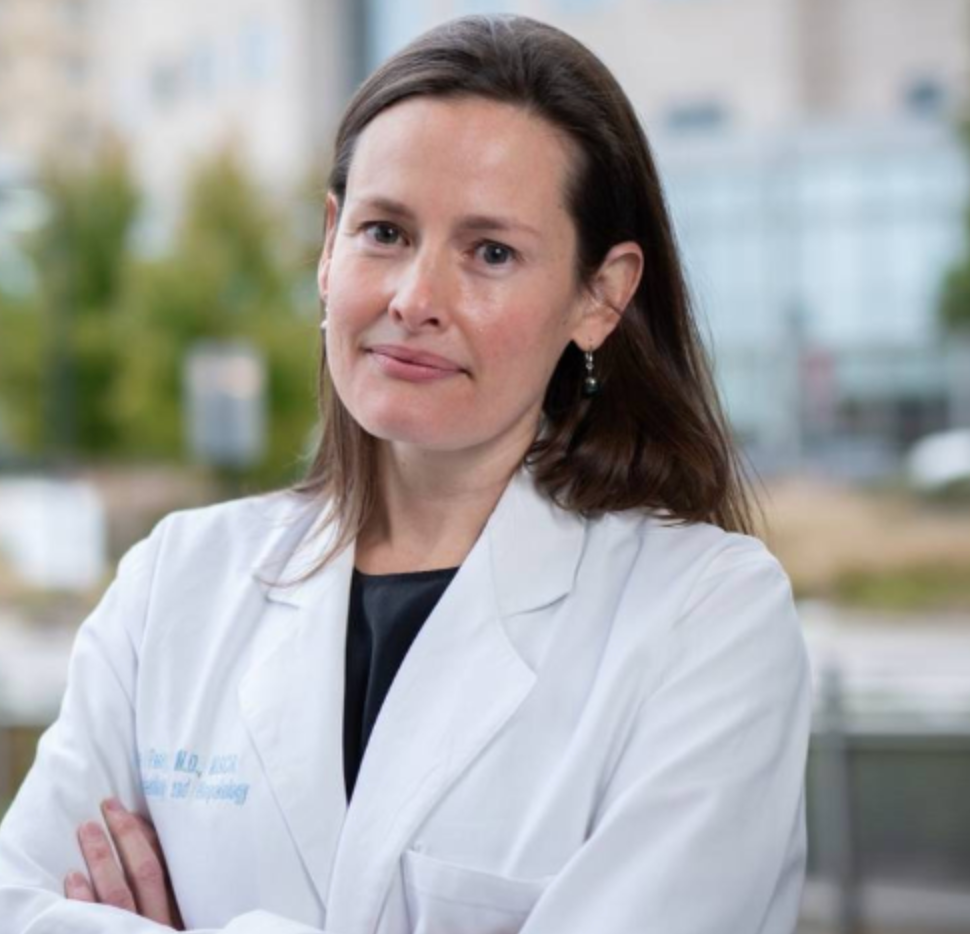Video
Identifying CDI: Presentation, Prevalence, and Spectrum of Disease
Author(s):
Comprehensive discussion on the identification of Clostridioides difficile infection, the spectrum of disease, and overall epidemiology.
Transcript:
James A. McKinnell, MD: I want to transition into our second section, which is understanding Clostridium difficile–associated diarrhea. Carl, I’ll turn to you. What is C diff?
Carl V. Crawford, MD: C difficile is a gram-positive spore-forming anaerobic rod that’s capable of causing disease by the elaboration of 1 or 2 toxins that inflame the lining of the colon. It’s very specific to the colon. Once that happens, you lose the ability to regulate fluids and electrolytes across the wall of the colon and it ends up giving people diarrhea. That diarrhea in the context of C difficile defined by clinicians is having 3 or more unformed or watery stools within a 24-hour period for at least 2 consecutive days. Once you have that clinical diagnosis, the question is: is that individual’s diarrhea being caused by this particular organism, because that would make it the C difficile infection.
One of the things we do as clinicians is identify: does this patient meet the criteria of diarrhea. The second part to this is, are there any alternative explanations for this diarrhea? Is the person on a laxative? Is this person on a chemotherapeutic agent that can cause diarrhea? Once you’ve excluded all those things, the next step is to confirm that C difficile is causing this individual’s diarrhea. We do that by testing for the presence of the toxin itself because that’s causing the disruption in the wall of the colon. There are tests that are commercially available for us at most hospitals where you can detect this toxin, which is great because once you have that patient with the diarrhea, you’ve ruled out other things. You have this positive toxin, you have your diagnosis, and you can begin treatment.
Sometimes the difficulty comes when we don’t have the availability to confirm that toxin, and we have other tests that are extremely sensitive to detect the presence of a Clostridioides species that harbors a gene that can make this toxin. We may detect it and see that it’s present inside an individual, but it doesn’t tell us whether that organism is making the toxin. It tells us only that there’s an organism in there that has the potential to make that toxin. Sometimes that can lead to overtreatment in some individuals.
In that case where we can pick up the presence of Clostridioides difficile in an individual, but it’s not producing a toxin and it’s not causing that patient’s diarrhea, we call that colonization. That’s an important distinction between being colonized with the organism, meaning that it’s just sitting inside our gastrointestinal tract—I’m sure we’re harboring this organism, and the organism causing a patient to have diarrhea or be hospitalized, which is the true infection. With the true infection, you must treat just being colonized. You don’t treat, and that’s the important distinction between the 2.
James A. McKinnell, MD: That’s an important concept: what’s colonization and what’s true infection? When you’re talking about somebody who has true infection with C difficile, are we talking about mild diarrhea or can this be much more severe? For an individual patient, how big of a problem can C difficile be?
Carl V. Crawford, MD: It’s very interesting because there’s a whole spectrum of disease that this particular organism can cause, and it can vary anywhere between mild diarrhea—a patient may have a couple of bowel movements a day that are loose or watery—and severe diarrhea, which results in dehydration that requires hospitalization. It can get even worse than that, or it can cause severe colitis—which we call fulminant colitis or pseudomembranous colitis—and can land individuals in an intensive care unit [ICU] and has the potential for sepsis and even require surgery to prevent death. This is an organism that has a high degree of morbidity and mortality. Over the last several decades, we started to see the evolution or the appearance of an epidemic strain or a hypervirulent strain that would lead to this particular increase in morbidity and mortality, and we call that the NAP1/B1/027 strain.
James A. McKinnell, MD: In terms of sort of speed of presentation, how fast does this come on?
Sahil Khanna, MBBS, MS: It’s very interesting. That’s a variable after the risk factor exposure. If I take a patient and ask them their history, they could have taken the antibiotic, which is the most common risk factor for getting C difficile in the last week to the last 3 months. The presence of the antibiotic as a risk factor can be traced back several months at times. It’s a double whammy. You get the antibiotic as a risk factor, and then the second part of it is exposure to the C difficile organism in the spore form or the vegetative form from the environment.
After that, some people have an indolent course, where they get slowly sick and get a couple of loose tools, and then it progresses very fast. If you have other risk factors that put you at risk for getting bad illnesses—older people, immunocompromised people, multiple antibiotics—then you can see a very rapid turn to the worst, in which people get very sick very quickly. I’ve seen people who present to the emergency department and are sent home with a prescription because they have mild disease. At the same time, another patient who comes to the emergency department could be in the ICU in 12 hours and be intubated. It’s a wide spectrum that we see in terms of how fast people get sick and how sick people get.
James A. McKinnell, MD: From an epidemiological perspective, Kelly, how big of an issue is C difficile in the United States? Is this a big deal? Is this a minor deal?
Kelly R. Reveles, PharmD, PhD, BCPS: It’s a big deal in the United States and worldwide. The Centers for Disease Control and Prevention classifies C difficile as 1 of only 5 urgent threats to public health in the United States. There was a great article published [in BMC Microbiology] by [Wenpeng] Gu and colleagues last year that captured the epidemiology of C difficile from the emerging infections program, but also extrapolating to national estimates. They estimate that we have close to half a million cases of C diff every year.
Now, they did some adjustments for potential overestimation for certain diagnostic tests. We’re talking at least 365,000 true infections every year so common. Of course, patients can have severe disease, which ultimately leads to potentially death. Many studies have characterized mortality associated with C diff. Some have been able to calculate attributable mortality, which tends to be 5% to 10% or so. We’ve done some epidemiology studies in the national veteran population. If you look out 30 to 60 days for all-cause mortality, and we’re talking 20% to 30%. This is an important infection that can lead to really poor outcomes among patients.
One of the other things the Gu study characterized was community associated vs health care associated. Our health care–associated C diff is among patients who develop the infection within the hospital— hospital onset is after 72 hours of admission or patients who present from the community but who have had recent health care exposure within the past 12 weeks or so. Then we have our community-associated cases: patients who haven’t had health care exposures recently. Right now, the epidemiology is about split: 50% of our cases are health care associated, and 50% are community associated. That’s a change because we’ve typically thought of C diff as a health care–associated infection, but rates of health care–associated infections have gone down substantially over the past decade or so, whereas community-associated cases are increasing or have remained steady.
James A. McKinnell, MD: I was going to raise a topic later that’s near to your heart, which is antimicrobial stewardship in the outpatient setting is clearly a next need.
Thank you for watching this HCP Live® Contagion® Peer Exchange. If you enjoyed the content, please subscribe to our e-newsletters to receive upcoming Peer Exchanges and other great content right in your in-box.
Transcript edited for clarity.





